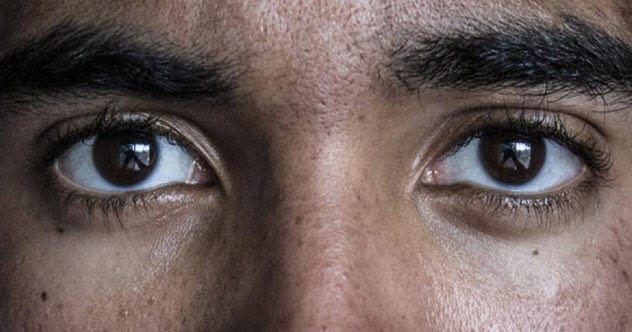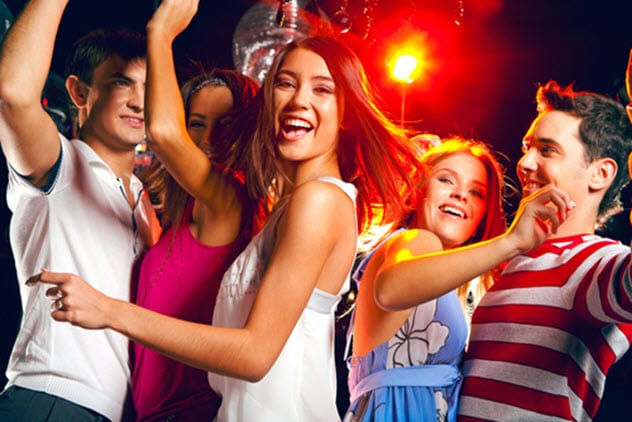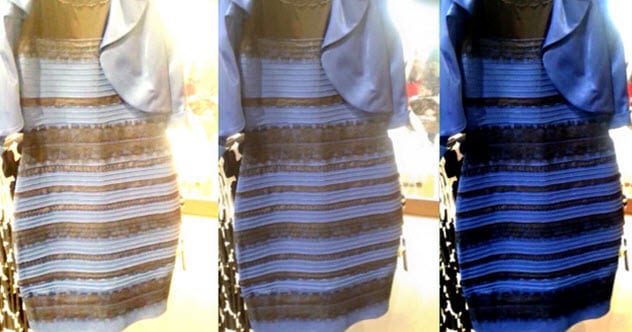 Mysteries
Mysteries  Mysteries
Mysteries  History
History 10 Surprising Stories About the Texas Rangers
 Humans
Humans 10 Philosophers Who Were Driven Mad by Their Own Theories
 Miscellaneous
Miscellaneous 10 Video-Game-Worthy Weapons and Armors from History
 Weird Stuff
Weird Stuff 10 Psychics Who Accurately Predicted Wartime Events
 The Arts
The Arts 10 Pieces of Art Inspired by a Broken Heart
 Health
Health 10 Science Fiction-Sounding New Medical Treatments
 History
History 10 Surprising Facts About the Father of Submarine Warfare
 Space
Space Ten Astonishing New Insights into Alien Worlds
 Weird Stuff
Weird Stuff 10 Bizarre Summer Solstice Rituals Still Practiced Today
 Mysteries
Mysteries Top 10 Haunting Facts About the Ghost Ship MV Alta
 History
History 10 Surprising Stories About the Texas Rangers
 Humans
Humans 10 Philosophers Who Were Driven Mad by Their Own Theories
Who's Behind Listverse?

Jamie Frater
Head Editor
Jamie founded Listverse due to an insatiable desire to share fascinating, obscure, and bizarre facts. He has been a guest speaker on numerous national radio and television stations and is a five time published author.
More About Us Miscellaneous
Miscellaneous 10 Video-Game-Worthy Weapons and Armors from History
 Weird Stuff
Weird Stuff 10 Psychics Who Accurately Predicted Wartime Events
 The Arts
The Arts 10 Pieces of Art Inspired by a Broken Heart
 Health
Health 10 Science Fiction-Sounding New Medical Treatments
 History
History 10 Surprising Facts About the Father of Submarine Warfare
 Space
Space Ten Astonishing New Insights into Alien Worlds
 Weird Stuff
Weird Stuff 10 Bizarre Summer Solstice Rituals Still Practiced Today
Top 10 Simple Things That Mess With The Mind
The mind can stumble over simple things. At times, a biological glitch is responsible. Then we see the wrong colors, cannot stop eating, or struggle to look honest during a conversation.
Other triggers have no explanation for why they mess with the mind—like being offered a hat or a cookie. Then people float out of chairs and give away dangerous information. Indeed, the hiccups of the brain remain a fascinating world.
10 Bizarre Ways Your Sense Of Touch Changes How You Think
10 The Food Variety Effect

Christmas is full of cheer, tinsel, and weight gain. The festive season is notorious for leaving extra padding. Even though people eat more during this time, they are often surprised by the amount of weight that greets them in January. This is largely due to a phenomenon known as the “variety effect.” The more food is on offer, the more people eat without realizing it.
Nature has a way of curbing the appetite. The longer the tongue deals with the same texture or flavor, the more one’s appetite diminishes. Presto, the meal ends without gorging oneself.
However, this mechanism fails when people graze at buffets, Thanksgiving dinners, or Christmas lunches. Switching between different foods delays the desire to stop eating because the flavors and textures keep changing. This is why something as simple as a meal with several courses can fool guests about how much they consume in one sitting.[1]
9 Eye Contact Freaks Out The Brain

According to body language books, people who don’t maintain eye contact might just be untrustworthy characters. However, there is now evidence that the weasel factor is not the entire story.
Those who cannot stare at another person while holding a sparkling conversation are experiencing an unusual effect. Our brains use the same regions for talking, thinking, and keeping eye contact. Sometimes, this causes a mental traffic jam.
This conclusion came from a small Japanese study. But the outcome suggested that the brain struggles with the combination of focusing on a face and thinking of words to say. The effect worsens when the conversation uses new or difficult phrases.
To cope, the befuddled brain tries to single-task by making the person feel that he has to avert his eyes.[2]
8 Crossed Arms Can Bring Pain Relief

There are plenty of ways to stop the pain. But pills and potions aside, the future of pain relief could include physiotherapists demonstrating poses to confuse the brain.
A small study in 2011 showed that the idea might not be as ludicrous as it sounds. Twenty people agreed to be zapped by a laser. After being burned on their hands, they crossed their arms to see if this simple act could reduce the pain.
The participants reported that their hands felt better and their EEG caps, which measured the brain’s electrical mood, said the same thing. Apparently, the noggin is used to the left hand touching the left side of the world. The same with the right hand and side.
Crossing the arms places the injured hand on the wrong side and tricks the brain into a weaker pain awareness. That is the theory anyway. But for a new pain therapy still in its infancy, the scientific evidence is looking good.[3]
7 Left And Right

Turn left? Go right? Left-right confusion is surprisingly common. Sometimes, it leads to terrifying mistakes—like the pair of surgeons who once removed the wrong kidney and the patient died. Even more disturbing, when more medical professionals were tested, too many identified the incorrect eye booked for surgery.
The problem grows when there is pressure to pick a side. A passenger giving directions to a speeding driver is also more likely to say “turn that way” and end up in the wrong place.[4]
Two directions. A simple confusion. Yet despite countless attempts, scientists still do not know why this happens. They have a suspicion, though, that the brain’s way of processing the different sides is more complicated than just looking one way or the other.
Telling somebody else to go a certain way or trying to see their left or right when it’s the opposite of our own can mess with the mind. Especially when there is no time to consider things at a slower pace.
6 The Good Looks Bias

Nobody likes to think that something as superficial as looks can sway their opinion. But the statistics are there. Attractive people get more votes and shorter criminal sentences. They are also viewed as more honest, trustworthy, kind, and intelligent.
This does not mean that everybody is a shallow idiot. Once again, science suggests that the brain is making a multitasking blooper.
The same brain region rates beautiful faces and good behavior in others. So, when the brain thinks about hot eyebrows, it also assumes things about the person’s character that might not be so positive in reality.
The same channel also works in reverse. When that happens, people who are not conventionally attractive are seen as beautiful because they have gracious personalities.[5]
10 Fascinating Ways Our Brains Can Be Manipulated
5 Kids Think Birthday Parties Cause Aging

They know that it’s time for presents and cake and that today is all about them. That is not the confusing part. In a cute way, some children believe that the birthday party itself makes them older.
After researchers spoke to children aged four to nine years old, some kids said that they would never grow older without a birthday party. When asked if the elderly could regain their youth by celebrating their birthdays in reverse (an 80-year-old celebrating his 79th birthday, for example), a couple of kids believed that this was possible.[6]
Like adults, children look for meaning in personal events. Turning older is a big deal, but the only obvious thing happening is the party. Therefore, the younger the child, the likelier they are to mistake the celebration as the reason they just aged.
4 Motion Sickness Is Mistaken For Poison

Scientists believe that the brain has a fear of being poisoned. When signals do not add up, the brain uses an old faithful to rid the body of toxins—the barf. Unfortunately, the brain sometimes imagines things. Motion sickness is a classic example.
Evolution cannot keep up with technology. In this case, the human body never adapted to moving transport. The main problem is that vehicles make it hard for the brain to decide whether the body is on the move or is stationary.
There is little muscle action, so the brain knows that the person is sitting still. However, the ears carry a special fluid capable of sensing movements. During a drive, the sloshing sends a clear message. This body is hurtling forward.[7]
The mixed signals wreak havoc with the brain’s hypochondria. Convinced that the body ingested something bad, the brain triggers nausea. Some people get it so bad that they are forced to pull over to throw up. Interestingly, it remains a mystery as to why motion sickness only affects certain individuals and not others.
3 Color Changes When The Brain Bumbles Light

When that happens, things can get nasty online. Take a Tumblr post in 2015, for example. It showed a dress, which was simple enough. But two factions were soon at each other’s throats. The one side insisted that the garment was blue and black. The rest called them idiots because the dress was clearly white and gold.
Nobody lied. Things just went a bit haywire in the brain department.[8]
When we look at something, wavelengths of light hit the retina and stimulate the brain’s visual areas. This makes us see an image. Normally, the brain filters out the source of light and tries to extract more light frequencies from the object itself.
In this case, when the brain succeeded in sponging the object’s light, people saw the real dress—the one that was blue and black. But the white-and-gold crowd fell foul to a simple switch. Instead of focusing on the material’s wavelengths, their brains gave more love to the source of light around it (probably the daylight).
2 Trading Personal Information For A Cookie

Most people want their private information to stay private. They go to great lengths to keep the details away from the devils out there. But something odd happened in 2014. A stranger offered cookies, and people gladly handed over their sensitive information.
Parents warn their kids against sweetie people like this. But apparently, the adults themselves cannot resist the right lure. Visitors to an arts festival in Brooklyn found this out the hard way. Luckily for them, it was an experiment and not an identity racket.
Artist Risa Puno offered cookies decorated with the Instagram logo. The trendy treats were a hit. They could be “bought” with personal details. To get a cookie, people had to give Puno their phone numbers, driver’s license details, maiden names, fingerprints, or the last few digits of their social security numbers.
Even though these nuggets are gold to criminals, the cookies sweetened 380 people into parting with their personal details.[9]
Maybe it was the cookie’s innocence. Maybe it was the smile of an artist standing at an official-looking space at an art festival. Whatever witchcraft was responsible even made people ignore a notice saying that Puno could share their details with third parties.
In the end, the experiment was done to test a theory. The latter suggested that people want their information to stay safe but do not grasp the dangers of trading tidbits about their privacy. This makes it easy to sway them with something as simple as a frosted cookie.
1 The God Helmet

In 2018, researchers played with people’s heads. More specifically, they made people wear skateboarding helmets and told these individuals that the wires hanging from the headgear were going to influence their brains.
The researchers also said that each helmet’s electrical current could give the participants a spiritual experience. Even the hat’s name was enough to invoke awe in the more religious-minded. It was called the “God Helmet.”
The helmet was just a helmet. The wires were connected to a device with lights, but that was just for show. There was no electrical current. The scientists aimed to see if alcohol could make people believe that they were having a spiritual encounter. For this reason, the team reaped 193 participants from a music festival in the Netherlands where tipsy and drugged volunteers were guaranteed.[10]
Each person wore the helmet for 15 minutes. During that time, their hearing and sight were blocked with white noise and a blindfold, respectively. In the end, drugs and alcohol did not give anyone an edge.
Both sober and sozzled festivalgoers experienced bizarre things. Most felt some kind of space or time distortion, hallucinations, or unusual physical sensations. Some heard voices or floated out of their chairs.
Interestingly, those who reacted the strongest to the placebo hat were the self-reported believers in spirituality—but not necessarily God. If anything, their faith could have made them more susceptible to suggestion than the rest.
10 Mysterious Soundscapes That Rocked The Ancient World








